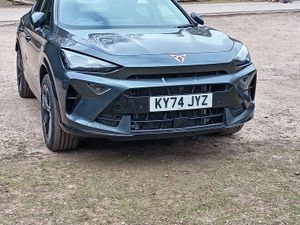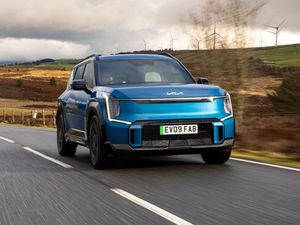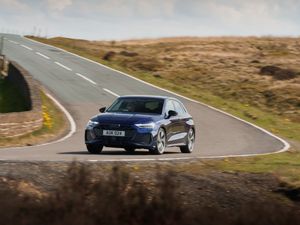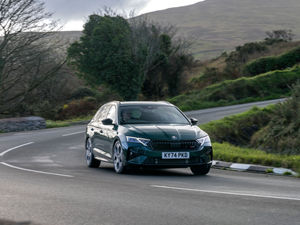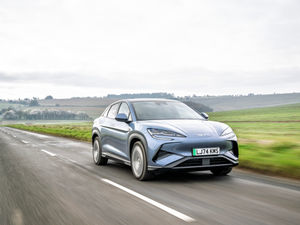UK Drive: Renault's Grand Scenic takes on accomplished rivals from the crossover class
In a market which is increasingly losing sales to the ever-popular SUV, Renault has produced another MPV. Can the French manufacturer’s Grand Scenic prove that the large family car isn’t dead? Will Rimell finds out
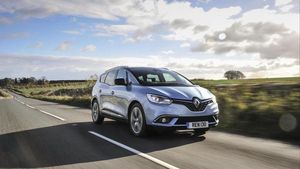
What is it?

The Grand Scenic is Renault’s beefed up MPV with extra room and two additional seats for larger families. Renault has tried to bring some modern luxuries to bolster the MPV’s appeal, with massaging seats, Bose speaker-system and leather interior.
It’s the third generation of the popular family car, first launched in 2004. Its sister, the Scenic, has sold more than 6.5 million cars worldwide since its release in 1996.
What’s new?
For the 2018 update, the French carmaker has completely overhauled both the interior and exterior of the Grand Scenic, giving it a more premium feel than its predecessor.

An abundance of curves and angles make for an attractive look. Renault, though, says it has tried to give its MPV a sporty stance – although sporty is not what comes to mind when looking at it.
The look continues a design ‘revolution’ by the brand that has also been applied to the Megane, Kadjar, Espace and Talisman models.
What’s under the bonnet?
Renault gives a large choice of engine sizes, from 1.2- or 1.4-litre petrol to the premium 1.6-litre diesel.

The top-spec diesel, which our test car was fitted with, pumps out 158bhp with 380Nm of torque. Clearly not built for speed, the Grand Scenic can reach the heady heights of 124mph, and a 0-60mph time of 10.5 seconds is nothing to shout about – though certainly brisk enough for everyday driving.
What’s it like to drive?
Despite its large size, the Grand Scenic is surprisingly easy to manoeuvre. Take it to a city and it doesn’t feel too big, while it takes on backstreets with the same ease as it tackles A-roads. Put the 1.6-litre diesel in Sport mode and the rather surprisingly responsive acceleration gets you from light to light with little fuss.

The Scenic also comes with other driving modes, including Neutral, Comfort, Eco and Perso – which is a fancy way of saying personalised. All these feel pretty much the same, apart from the responsive Sport. Although Eco mode is a bit pointless, saving minimal fuel but heavily impacting on the driving experience with looser steering and diminished acceleration.
How does it look?
It’s clear that Renault has started afresh with the new model. Put the third and fourth generations side by side and the improvements are clear to see. The 2018 model’s funkier styling definitely appeals far, far more than the drab exterior of its predecessor.
From the side, the long bonnet and sweeping roof give the Grand Scenic an attractive profile, and from the front the car is nice to look at – even drawing a few gazes in some areas. But the rear is too squared and boring, which is a shame as, overall, it is an attractive car.
What’s it like inside?
The comfortable and spacious interior of the Grand Scenic is by far its greatest asset. With seven full-leather seats, leather steering wheel, lots of leg room and an abundance of cubby holes, it’s an impressively comfortable place to be. Long journeys are a breeze and leave you feeling refreshed rather than dogged.

In the centre of the dashboard sits an 8.7-inch infotainment system which, despite being large, is difficult to navigate thanks to a myriad of different menus to scroll through.
It is also not recommended to rely on Renault’s own sat nav – if you don’t know where you’re going, you may be better served getting the map out! The Grand Scenic’s sat nav is not a fan of tall surroundings, traffic or anything other than straight roads. Drive through London during rush hour and this annoying quirk becomes apparent. Luckily, though, it is Apple CarPlay and Android Auto compatible, which helps, but the lack of screen adjustment on the portrait screen is a flaw.
However, the Multi-Sense personalisation feature – which allows up to six different users – is a nice, Netflix-style touch. It changes everything from the driving mode, to the paired phone and even the seat position.
What’s the spec like?
Starting at £23,805, The Grand Scenic is not unreasonably priced, especially for the average family. But you have to spend quite a bit more to get the niceties. Standard equipment on the Expression+ entry level model includes a seven-inch touchscreen display, climate control, digital speedometer, auto headlights, 20-inch alloy wheels and keyless entry.

From there it’s an additional £1,500 for the Dynamique Nav specification – which comes with sat Nav and all-round parking sensors – and another £2,000 for the additions of the head-up display, panoramic sunroof and rear parking camera of the Dynamique S Nav.

But if that’s not enough, you can pay another £1,500 – taking the total to £28,805 – for the Signature Nav. This includes full LED headlights, Nappa leather steering wheel and a driver’s seat that remembers you, with an auto-adjusting lumbar.
Verdict
From the outset, the Renault Grand Scenic is a funky looking car and this definitely separates it from its competitors. But for the top-spec model, you need to shell out just over £30,000, which is just too much for a the average family to consider.

The 1.6-litre diesel engine is also very thirsty – another drawback for family use. But with so many competitors on the market, including the Citroen Grand C4 Picasso (top spec from £27,080), families may be better placed looking at the growing SUV market, which offer a lot more for significantly cheaper prices.
Facts at a glance
Model as tested: Renault Grand Scenic Signature Nav
Price: £33,655
Engine: 1.6-litre four-cylinder diesel
Power: 158bhp
Torque: 360Nm
Max speed: 124mph
0-60mph: 10.7 seconds
MPG: 60.1 mpg
Emissions: 122g/km CO2

